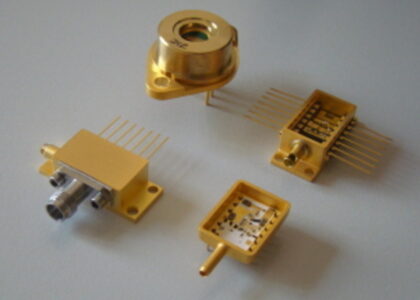The global Diamond Wire market is experiencing rapid growth, with projections showing a significant increase in demand and value over the next decade. As industries such as construction, mining, and solar energy continue to expand, the market for Diamond Wire is expected to grow from USD 1.2 billion in 2022 to USD 4.2 billion by 2032, representing a compound annual growth rate (CAGR) of 10.12%. This growth is primarily driven by the rising demand for renovation projects and an expansion in both residential and commercial construction.
Understanding the Diamond Wire
Diamond Wire is a cutting-edge technology used in industries requiring high precision and efficiency. It is widely utilized in cutting and slicing materials such as silicon, marble, granite, and concrete. The wire is embedded with industrial-grade diamonds, enabling it to perform exceptionally well in cutting through hard and abrasive materials. In construction, it plays a pivotal role in the demolition of structures, where precision and speed are of utmost importance. The solar industry also benefits from Diamond Wire in the production of photovoltaic (solar) cells, contributing to its growing relevance across multiple sectors.
The versatility of Diamond Wire lies in its ability to handle intricate tasks across diverse industries with minimal wear, a characteristic that enhances its demand as a reliable tool in precision cutting. As the technology progresses and applications diversify, Diamond Wire continues to gain prominence for its unparalleled cutting efficiency and ability to increase productivity.
Diamond Wire Value and Growth Projections
The Diamond Wire market is poised for significant expansion over the next decade. With a market valuation of USD 1.2 billion in 2022, experts forecast that this will grow to USD 4.2 billion by 2032. This rapid growth is expected to be fueled by a variety of factors, with residential and commercial construction projects being the primary drivers.
In addition, the demand for renovation projects is on the rise globally, particularly in developed markets where infrastructure is aging and needs to be replaced or updated. As urbanization accelerates and cities expand, the need for more efficient, precision-driven cutting technologies such as Diamond Wire is becoming increasingly important. Its role in advanced demolition techniques, as well as in cutting through materials used in high-rise construction, positions Diamond Wire as a key tool for future developments.
Key Takeaways
- Projected Market Growth: The global Diamond Wire market is expected to grow from USD 1.2 billion in 2022 to USD 4.2 billion by 2032, with a CAGR of 10.12%.
- Diverse Applications: From construction to solar energy, Diamond Wire is a vital technology in various industries, offering superior cutting capabilities in hard and abrasive materials.
- Construction Boom: Increased demand for renovation and expansion of residential and commercial infrastructure is expected to drive the majority of market growth.
- Technological Advancements: As the technology behind Diamond Wire continues to evolve, it will open up new applications, further driving market expansion.
Prominent Drivers of the Diamond Wire
Several key factors are propelling the growth of the Diamond Wire market:
- Rising Demand in Construction and Renovation: As the global demand for residential and commercial real estate continues to grow, so does the need for innovative technologies to support these projects. Diamond Wire’s precision cutting ability is indispensable in modern construction, especially in demolition, slicing, and material shaping.
- Technological Advancements: Continuous research and development in Diamond Wire technologies have made it more durable and efficient, increasing its applicability across various industries. Innovations like improved wire designs and enhanced diamond bonding processes have led to greater product lifespan and cutting speed, making Diamond Wire even more attractive for industrial use.
- Growth in Solar Energy Sector: Diamond Wire has found significant demand in the solar energy industry, particularly for the manufacturing of silicon wafers used in photovoltaic cells. As the demand for renewable energy grows, so too does the reliance on Diamond Wire for precision slicing of silicon and other materials.
- Urbanization and Infrastructure Development: Rapid urbanization in emerging markets is driving a boom in construction and renovation projects. As cities expand, the demand for high-quality materials and efficient construction technologies will continue to boost the market for Diamond Wire.
Key Companies Profiled
Asahi Diamond; Diamond Pauber; DIAT New Material; Nakamura Choukou; Sino-Crystal Diamond; Nanjing Sanchao; Henan Yicheng; Zhejiang Ruiyi; SCHMID among others.
Diamond Wire Trends and Restraints Assessment
While the Diamond Wire market presents lucrative growth opportunities, it also faces several challenges that could temper its expansion.
Trends:
- Sustainability Focus: The growing emphasis on sustainability in construction and manufacturing is pushing industries to seek out environmentally friendly technologies. Diamond Wire’s precision cutting minimizes material waste, making it an eco-friendly option in many applications.
- Automation and Robotics: Increasing automation in the manufacturing sector is improving the efficiency and scalability of Diamond Wire technologies, which will likely continue to enhance its usage in large-scale production.
Restraints:
- High Initial Cost: Despite its long-term cost efficiency, the initial investment in Diamond Wire technology can be relatively high, which may deter smaller companies or startups from adopting the technology.
- Competition from Alternative Technologies: Other cutting technologies, such as abrasive waterjets or laser cutting, present competition to Diamond Wire, particularly in industries where these alternatives are cheaper or easier to implement.
Key Segments Profiled in the Diamond Wire Industry Survey
By Bead Shapes:
- Cylindrical Diamond Wires
- Bi-Conical Diamond Wires
- Conical Diamond Wires
By Bonding Techniques:
- Diamond Wires via Electroplating
- Diamond Wires via Moulding
- Diamond Wires via Vacuum Brazing
- Diamond Wires via Sintering
By Diamond Types:
- Natural Diamond Wires
- Synthetic Diamond Wires
By Application:
- Wires for Diamond Cutting
- Diamond Wires for Sapphire Cutting
- Diamond Wires for Silicon Cutting
- Diamond Wires for Concrete Cutting
- Diamond Wires for Quartz Cutting
- Diamond Wires for Metal Cutting
By Region:
- North America
- Latin America
- Europe
- Asia-Pacific
- Middle East and Africa
About Future Market Insights (FMI)
Future Market Insights, Inc. (ESOMAR certified, recipient of the Stevie Award, and a member of the Greater New York Chamber of Commerce) offers profound insights into the driving factors that are boosting demand in the market. FMI stands as the leading global provider of market intelligence, advisory services, consulting, and events for the Packaging, Food and Beverage, Consumer Technology, Healthcare, Industrial, and Chemicals markets. With a vast team of over 400 analysts worldwide, FMI provides global, regional, and local expertise on diverse domains and industry trends across more than 110 countries. Join us as we commemorate 10 years of delivering trusted market insights. Reflecting on a decade of achievements, we continue to lead with integrity, innovation, and expertise.
Contact Us:
Future Market Insights Inc.
Christiana Corporate, 200 Continental Drive,
Suite 401, Newark, Delaware – 19713, USA
T: +1-347-918-3531
For Sales Enquiries: sales@futuremarketinsights.com
Website: https://www.futuremarketinsights.com
LinkedIn| Twitter| Blogs | YouTube


